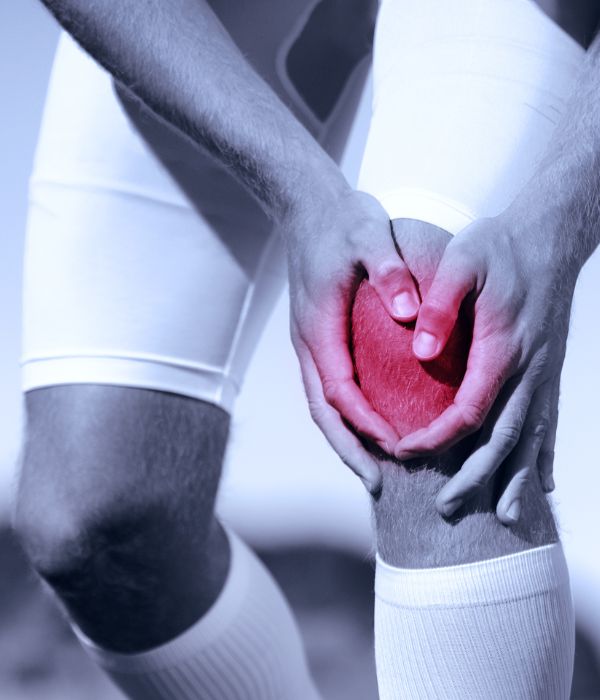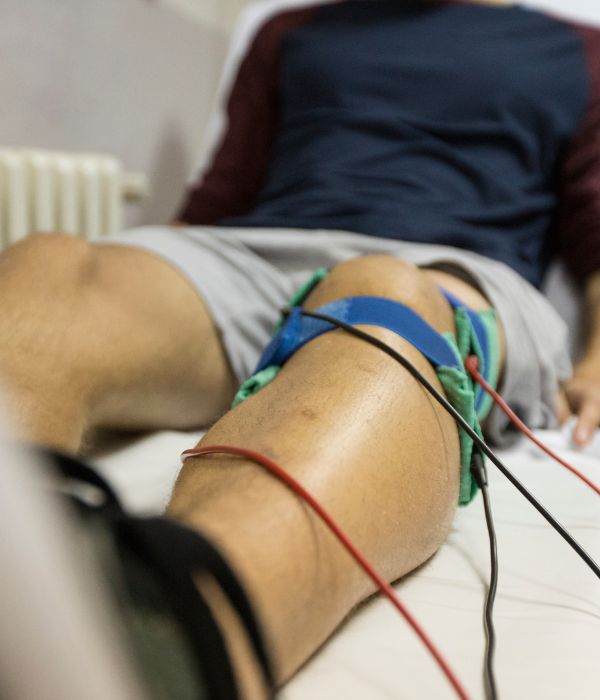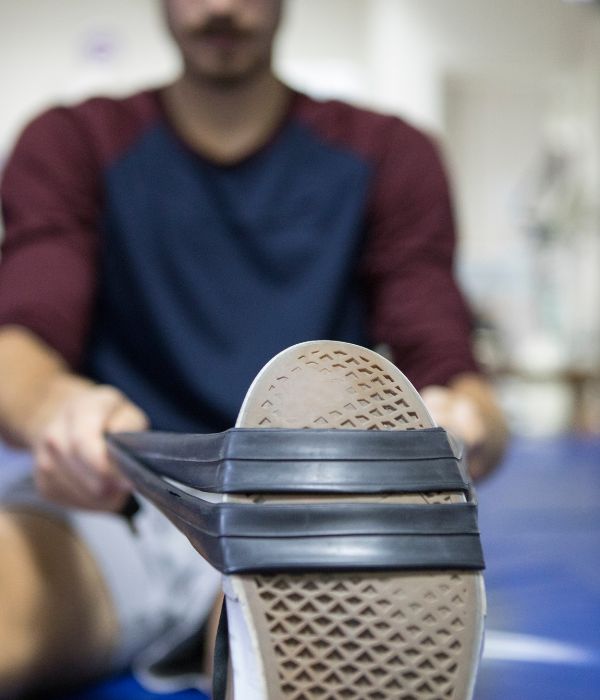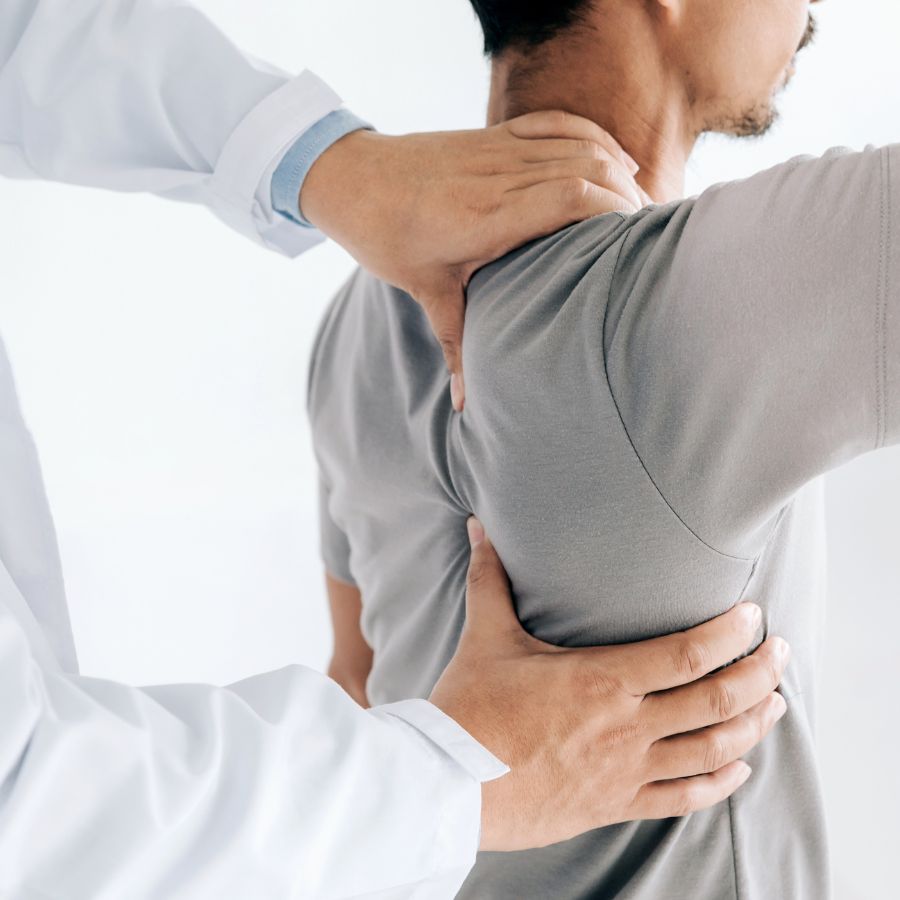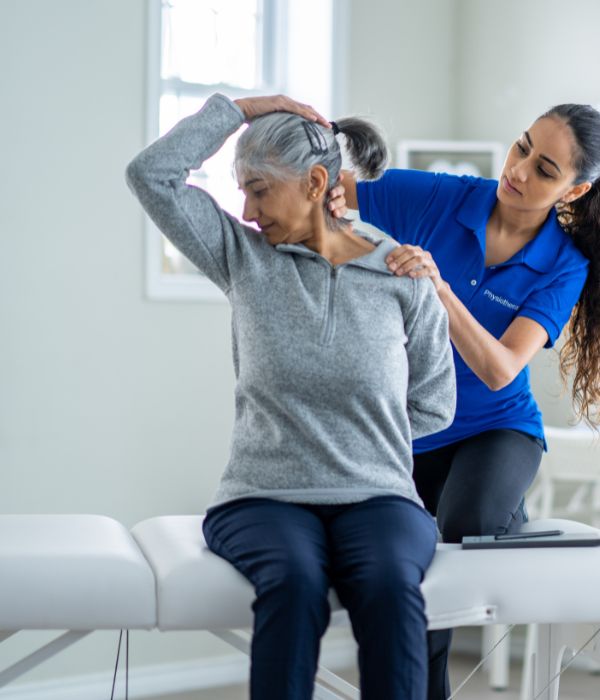Insta Physio - Get Back to Sports Faster!
ACL Surgery in Gurgaon
At Insta Physio, we focus on getting you back to sports faster with expert-guided rehabilitation. Surprisingly, 7 out of 10 ACL tears can heal without surgery when treated early with the right physiotherapy approach. Our customized, evidence-based programs ensure faster recovery, reduced pain, and improved strength.
Do you experience any of
these knee problems?
✅ Instability, pain, or loss of confidence while walking or running?
✅ Locking, clicking, or stiffness in the knee?
✅ Struggling with daily activities, sports, or even simple exercises?
✅ Gaining weight due to limited mobility?
Don’t decide on a treatment until you know these proven recovery methods!
With the right approach, you can get back to running and sports within just 3 months, even if you currently have pain, instability, or knee locking.
Why Choose Insta Physio?
✅ Specialist ACL Surgeons & Physiotherapists
✅ Minimally Invasive & Non-Surgical Options
✅ Tailored Rehab Plans for Quick Recovery
✅ Free WhatsApp MRI Review & Expert Consultation
Percutaneous ACL Repair
Heal Without Surgery
Did you know? 70% of ACL tears can heal without surgery! At Insta Physio, our goal is to preserve your ACL, not replace it.
How It Works
Percutaneous ACL repair is an advanced non-surgical treatment that helps your ligament heal naturally using regenerative techniques. This method is ideal for partial or nonretracted complete ACL tears, avoiding invasive surgery.
What We Use
We leverage biologic healing therapies that use your body’s own repair mechanisms to regenerate the ACL. These advanced techniques:
✅ Reduce pain & inflammation
✅ Promote natural ligament repair
✅ Strengthen & restore knee stability
Who is it for?
Patients experience gradual ligament healing, pain relief, and restored knee function without the need for surgical reconstruction.
Comparison: Traditional vs. Advanced ACL Surgery
| Treatment Type | Walking Recovery | Sports Recovery | Pain Level | Hospital Stay | Revision Rate |
|---|---|---|---|---|---|
| Traditional ACL Surgery | 4 Weeks | 8-9 Months | Moderate | 3-4 Days | 30% |
| Insta Physio Advanced ACL Surgery | 1 Day | 3 Months | Minimal | Same-Day Discharge | 7.7% |
QuadPro ACL Reconstruction
Faster & Stronger Recovery
For complete ACL tears, our QuadPro ACL Reconstruction technique offers a stronger, faster-healing solution than traditional ACL surgeries.
What is QuadPro ACL Reconstruction?
This minimally invasive technique uses a quadriceps tendon autograft to reconstruct the ACL. Unlike traditional methods, it preserves a portion of the original ligament, enhancing stability and proprioception.
Why QuadPro?
✅ Faster Recovery: Less invasive = quicker return to daily activities
✅ Stronger Graft: The quadriceps tendon is thicker & more durable than hamstring grafts
✅ Lower Risk of Failure: Reduces chances of revision surgery
✅ Minimally Invasive: Less pain, less scarring, faster healing
How is it different?
Unlike hamstring grafts, which weaken knee strength, QuadPro ACL Reconstruction keeps
the muscle strength intact, leading to better post-surgery performance.
Recovery Timeline:
Internal Brace ACL Repair
Maximum Protection, Faster Return to Sports
If your ACL is partially torn or repairable, Internal Brace Technology helps preserve your natural ACL while reinforcing it for extra protection.
What is Internal Brace ACL Repair?
Instead of removing the entire ACL, we repair and reinforce it using Fiber Tape Internal Brace Technology. This advanced technique allows the ligament to heal while being fully supported, reducing failure rates and recovery time.
Why Choose Internal Brace ACL Repair?
✅ Preserves your natural ACL – No complete ligament removal
✅ Reduces failure rates – 88% lower re-injury risk compared to traditional ACL reconstruction
✅ Quicker healing – Knee mobility restored within weeks
✅ Ideal for athletes – Enables faster return to sports & training
Recovery Timeline:
How It Works
Easy 6-Step Process
✅ WhatsApp Your MRI for a Free Online Opinion
✅ Get a Personalized Treatment Plan
✅ Meet Our Experts & Confirm Your Diagnosis
✅ Receive Minimally Invasive ACL Repair or Reconstruction
✅ Start Rehabilitation & Recovery with Insta Physio
✅ Get Back to Sports & Active Life in Just 3-6 Months
Get In Touch
Reach out to Insta Physio for expert guidance, appointments, and personalized care to support your recovery and well-being.
Phone
+91 95608 00412Send us your MRI reports on WhatsApp and get a free online consultation from our experts. We provide a detailed assessment and a personalized treatment plan to guide your recovery. Take the first step toward effective treatment with expert advice from trusted orthopedic specialists and physiotherapists—all from the comfort of your home!
What will happen if you don't take any treatment for your ACL injury?
Partial ACL Tear (Grade 1, 2, Sprain)
If you delay the treatment it will progress to complete ACL tear and then you will lose the chance of healing without surgery and have to go for arthroscopic all inside acl reconstruction with Fiber tape internal brace.
Complete ACL Tear (Grade 3, Near Complete)
Waiting more months will lead to knee cartilage, meniscus, and thigh muscle degeneration. With the torn anterior cruciate ligament the knee undergoes rapid degeneration and leads to secondary osteoarthritis very early and you will require total knee replacement surgery. Treatment is very important to prevent osteoarthritis, to maintain an active life and prevent total knee replacement surgery. After all-inside anterior cruciate ligament reconstruction with Fiber tape internal brace, the patient can resume running and sports within 3 months of surgery.
What is the average cost of anterior cruciate ligament ACL reconstruction/repair in India?
All Inside ACL Reconstruction With Fiber Tape Internal Brace Cost of ACL surgery depends on a variety of factors like the quality of the hospital, the healthcare facility you choose, technique of surgery, quality of ACL implants, doctor expertise, pre-evaluation of overall health of the patient. India is amongst one of those countries where you can get access to the best and most advanced ACL reconstruction or repair at a very low cost expense as compared to the European and American hospitals.
Doctors in India are very professional and Expert, the number of ACL/PCL reconstruction in India is estimated to be 5+ million. Our package cost of all inside Anterior cruciate ligament ACL reconstruction with Fiber tape internal brace { implant by Arthrex made in USA } is 160000 to 300000 INR { 2200 to 4200 USD } , Depending upon which room category you choose in the hospital and the quality of the implant.
Fiber tape internal brace has very good results in ACL reconstruction, within a month you can start jogging and within three months you can go back to your sports/running. We are offering the best price in India with this technique. Price of ACL reconstruction with bio screw technique is lower than the Fiber tape internal brace technique because of the low price of bioscrew. Additional costs include rehabilitation and surgery of other associated knee injuries like meniscus, PCL, MCL, LCL etc.
No ACL surgery can get the best recovery and result without physical therapy, and physical therapy costs are excluded from the surgery amount.
1,200+
Happy Patients10+
Years of Experience20+
Therapist & Staff2+
Branch ClinicWHY CHOOSE US
Expert Care from Surgery to Full Recovery
At Insta Physio, we combine expertise, advanced treatments, and personalized care to ensure optimal recovery. Our team is dedicated to helping you regain mobility and strength, providing innovative solutions for faster, sustainable healing and enhanced well-being.
HOW WE WORK
Stages of Consultation
Follow a clear, step-by-step process for personalized care, ensuring effective treatment and recovery.
Initial Assessment
Thorough evaluation to understand your condition and treatment needs.
Customized Treatment Plan
Personalized plan designed to address specific recovery goals and concerns.
Ongoing Therapy
Consistent therapy sessions to monitor progress and adjust treatment plans.
Follow-up and Recovery
Regular check-ins to ensure complete recovery and prevent future issues.
Take the First Step Towards Recovery Today!
Don’t let an ACL injury keep you down. Get expert care & recover stronger than ever! Book an Appointment Now.
Phone
+91 95608 00412Free MRI Review & Consultation – Click to WhatsApp Now!
Cost Calculator – Get a Quote Instantly!
Take the First Step Towards a Pain-Free Recovery.
Don’t let an ACL injury keep you from the activities you love. Get expert care from diagnosis to recovery with our combined ACL surgery and rehabilitation program.
FAQs
Frequently Asked Questions
What is ACL?
You may have heard about ACL. Let's talk about what it is and how it works. The ACL (anterior cruciate ligament) is found deep within the knee joint. The knee is primarily made of three bones: femur, tibia, and patella. For optimum functioning of the knee joint, structures like bone, muscles, ligaments, cartilage, bursae, and many small structures are involved. Ligaments are crucial for joint stability.
The ACL connects the femur and tibia. It is made up of type 1 collagen, found throughout the body in bone and soft tissue. Structurally, the ACL protects the knee joint across its full range of motion. It has two bundles: anterior medial and posterior lateral. When the knee is flexed or bent, the anteromedial bundle tightens to prevent excessive movement. When the knee extends or straightens, the posterolateral bundle tightens. The ACL also stabilizes the knee during leg rotation.
The ACL is commonly injured during athletic activities, but you don't have to be a professional athlete to damage it. Most ACL injuries occur through similar mechanisms. Let's understand what happens inside the joint and what forces cause ACL injuries.
Why is the ACL More Commonly Injured?
Because it is positioned in the middle of the knee joint. Any twisting or direct force can cause ACL injury.
Non-contact ACL injuries: These occur without a fall or external blow. They usually happen when a person is cutting, pivoting, jumping, stepping, or landing awkwardly, leading to knee twisting. Weight transfer and hip twisting create significant torque on the knee joint — this is called a dynamic mechanism of injury.
Contact ACL injuries: These happen from direct hits or blows to the knee, often involving damage to other knee structures due to external force.
Symptoms of ACL Damage
People or athletes commonly say: "I planted my foot, felt my knee twist, heard a pop, and couldn't continue." Rarely, someone may continue to play despite an ACL injury but later experience pain, swelling, and instability on uneven surfaces.
Pain: Sharp, cutting discomfort that may limit movement or leg lifting.
Swelling: Immediate swelling post-injury, sometimes progressively increasing over 24 hours, lasting up to a week.
Giving away: Loss of confidence while walking or running, especially on uneven or inclined surfaces.
Laxity: Feeling like the shin bone moves excessively forward.
Feeling of dislocation: Sensation of knee instability while walking or running; painful weight-bearing.
What Are the Types of ACL Injuries?
There are three grades:
Grade 1: Ligament fibers are stretched but not torn; stability is preserved.
Grade 2: Ligament fibers are partially torn with hemorrhage, reducing stability. Surgery is often required.
Grade 3: Complete rupture of ACL fibers, the most common and serious form of ACL injury.
Manual Tests to Confirm ACL Rupture
1. Anterior Drawer Test:
Patient position is supine. The knee is flexed to about 90 degrees. The examiner sits on the toes of the testing extremity to help stabilize it. The examiner grasps the proximal tibia just below the knee joint and attempts to translate the tibia anteriorly. The test is considered positive if there is a lack of a hard end-point or excessive anterior translation relative to the contralateral (non-injured) leg.
2. Lachman Test:
Patient position is supine. Place the testing extremity in 20 to 30 degrees of flexion. The examiner places one hand behind the tibia and the other on the patient's thigh. The examiner’s thumb should be positioned on the tibial tuberosity with the leg externally rotated. On pulling the tibia anteriorly, anterior translation of the tibia associated with a soft end-feel indicates a positive test. More than 2 mm of anterior translation compared to the uninvolved knee suggests an ACL rupture.
3. Pivot Shift Test:
The patient lies supine with the leg relaxed. The examiner grasps the heel of the involved leg and places the opposite hand laterally on the proximal tibia just distal to the knee. A valgus force and axial load are applied while internally rotating the tibia as the knee moves from a fully extended position into flexion. Subluxation of the tibia indicates a positive test as the femur rotates externally.
Management of ACL Injuries
Injuries to the ACL rarely occur in isolation. The presence and extent of other injuries may affect the way in which ACL damage is managed. Confirming the diagnosis with MRI and physical assessment provides the most accurate evaluation of ACL and associated injuries. Surgical or non-surgical management of an ACL rupture is determined based on diagnosis and assessment findings.
Prevention of ACL Injuries
Females are more prone to ACL tears compared to males due to anatomical factors such as a wider pelvis, decreased ACL circumference, increased Q-angle, smaller and narrower intercondylar notch width, and hormonal influences like the pre-ovulatory phase of the menstrual cycle. However, muscular and neuromuscular risks are easily modifiable. Gait correction, knee valgus correction, activation of quadriceps and hamstring muscles, agility training, and plyometric exercises help reduce the chances of ACL damage.
FAQs
How does ACL injury occur?
An ACL rupture is one of the most common knee injuries and can happen during non-contact trauma or from direct impact to the leg. High-risk activities that increase the likelihood of ACL injury include jumping and landing with the knee collapsing inward, pivoting and cutting movements, or sudden twisting and turning.
What is the age group in which ACL ruptures occur the most?
Studies show that the most common age group for ACL injuries in males is between 19 to 25 years, while in females, it is more prevalent between 14 to 18 years.
Is ACL damage more common in females?
Yes, female athletes have an 8 times higher risk of ACL injury. This increased risk is attributed to factors such as leg alignment and the increased elasticity of tissues in females.
What are the signs and symptoms of an ACL rupture?
Symptoms include a loud popping sound at the time of injury, discomfort, knee swelling, and a sensation of instability in the knee. The knee may feel like it's giving away during movement, and there may also be knee locking or clicking.
What should I do if I think I have injured my ACL?
If you suspect an ACL injury, stop any physical activity immediately. Rest and apply PRICE therapy (Protection, Rest, Ice, Compression, Elevation). It is important to consult a physician for a detailed evaluation and proper management.
How will my doctor diagnose an ACL rupture?
Your doctor will conduct a physical examination, using tests such as the Lachman test, anterior drawer test, and pivot shift test to assess the ACL. Additional imaging, such as X-rays and MRIs, may be performed to check for other injuries that might accompany the ACL rupture.
Can an ACL rupture heal without surgery?
Yes, if the ACL injury is a grade 1 sprain, it may heal well with conservative treatments like orthobiologics and physical therapy.
What are my treatment options if I have an ACL injury?
Non-surgical options, such as orthobiologics, may help grade 1 or 2 ACL injuries. If the injury is severe (grade 3), surgical intervention like keyhole arthroscopic ACL reconstruction may be needed, with the new ACL created from the patient's hamstring tendon.
Can I have ACL surgery if I am still growing or a child?
Yes, advances in surgical techniques and implants allow for ACL reconstruction without affecting the growth plate. In some cases, ACL repair (instead of reconstruction) may also be done to preserve the growth plate.
Is ACL surgery worth it, or are there risks in delaying the procedure?
Delaying ACL surgery can lead to knee instability, muscle degeneration, and secondary osteoarthritis over time. Early intervention can help prevent further complications and maintain an active lifestyle.
What are some techniques to reduce ACL injury risk?
Exercises that focus on strengthening the core, improving balance, and training proprioception, as well as practicing proper cutting and pivoting techniques, can significantly reduce the risk of ACL injuries.
How painful is ACL surgery?
The level of discomfort depends on the type of surgery. Bio-screw techniques may cause discomfort for a few weeks, while all-inside ACL reconstruction with Fiber Tape Internal Brace has a quicker recovery, allowing patients to bend their knees and walk with minimal discomfort within a few days.
What is the fastest way to recover from ACL surgery?
The fastest recovery comes from all-inside ACL reconstruction with Fiber Tape Internal Brace. Patients can resume jogging within one month and running or participating in sports within three months post-surgery.
Do they use screws in ACL surgery?
Yes, screws (bio-screw or titanium screw) are often used to secure the ACL graft during surgery. However, the all-inside ACL reconstruction with Fiber Tape Internal Brace method avoids screw fixation and leads to faster recovery with a lower failure rate.
How long will I be on crutches after ACL surgery?
With the all-inside ACL reconstruction with Fiber Tape Internal Brace, crutches are not needed after the surgery. Patients can walk without support from the day after the procedure. If a bio-screw method is used, crutches may be needed for two to three weeks, depending on individual recovery.
Is walking good for ACL recovery?
Yes, walking is encouraged to aid in recovery post-surgery. It helps with circulation and reduces stiffness. After all-inside ACL reconstruction with Fiber Tape Internal Brace, walking is possible without discomfort or crutches within one day.
How long do I need to wear a brace after ACL surgery?
A knee extension brace is typically worn for the first three weeks after surgery, but it is removed during exercises.
How long will I be off work after ACL surgery?
For all-inside ACL reconstruction with Fiber Tape Internal Brace, patients can return to work within 7 to 10 days due to the faster and less painful recovery. For other procedures, like those using bio-screws, recovery may take 45 to 60 days.
How long does ACL surgery take?
ACL reconstruction surgery typically takes between 30 to 45 minutes.
Why is ACL surgery recovery so long?
Recovery time depends on the method used to fix the new ACL. With bio-screw fixation, recovery may take 6 to 7 months. However, all-inside ACL reconstruction with Fiber Tape Internal Brace allows patients to resume running and sports within three months, as the Fiber Tape provides extra support during healing.
Is it bad to wait for ACL surgery?
Delaying ACL surgery increases the risk of knee cartilage degeneration, meniscus damage, and muscle weakness. It is advised to undergo surgery within 1 to 2 weeks after injury, allowing time for swelling and inflammation to subside.
Can you walk with a torn ACL?
Initially, you may experience swelling and discomfort, but as these symptoms subside, walking becomes possible. However, activities that require stability, like running or sports, will be difficult.
How serious is a torn ACL?
A torn ACL severely affects knee stability, making it challenging to perform activities such as running and sports. Without treatment, it can lead to knee degeneration and early-onset osteoarthritis.
Is ACL surgery a major procedure?
ACL surgery is minimally invasive and typically performed via arthroscopy, a pinhole surgical method. Recovery is relatively fast, with minimal discomfort and blood loss.
Can I climb stairs after ACL surgery?
After an all-inside ACL reconstruction with Fiber Tape Internal Brace, patients can climb stairs the day after surgery.
What happens if ACL damage is not treated?
Untreated ACL injuries can lead to knee instability, muscle atrophy, cartilage degeneration, and early-onset osteoarthritis. It's crucial to seek treatment to maintain knee function and prevent long-term damage.
How do you tell if an ACL is torn or sprained?
A torn ACL causes knee instability, making it hard to perform running or sports activities. There is also often a popping sound at the time of injury, followed by knee swelling and discomfort.
What is worse: ACL or MCL rupture?
Both ACL and MCL ruptures are serious and significantly affect knee stability. Surgery may be needed if either ligament is completely torn.
Can you live without an ACL?
Living without an ACL will severely limit your ability to engage in activities like running, dancing, or sports. The knee will gradually develop osteoarthritis, and total knee replacement may eventually be required.
How do you strengthen your ACL?
Strengthening exercises for the ACL involve strength training, eccentric exercises, balance training, and functional drills to reduce the risk of injury.
What exercises will strengthen my ACL?
Exercises that focus on eccentric strengthening, balance, proprioception, and agility drills are excellent for strengthening the ACL and preventing injuries.
Does a Grade 1 ACL rupture need surgery?
Grade 1 ACL ruptures typically do not require surgery and can heal with conservative treatments like physical therapy and orthobiologics.
How much does ACL surgery cost?
Arthroscopic all-inside ACL reconstruction with Fiber Tape Internal Brace costs between 1.7 lakh to 3.5 lakh rupees, depending on the implant and hospital room choice.
How successful is ACL surgery?
ACL reconstruction, particularly using the all-inside method with Fiber Tape Internal Brace, has a 99.9% success rate, with patients resuming running and sports within three months.
Is ACL surgery always needed for a torn ACL?
If a patient is young and healthy without signs of secondary osteoarthritis, surgery is recommended to prevent future knee instability and degeneration.
Why do ACL reconstructions fail?
ACL reconstruction failure can result from poor surgical technique, improper tunnel placement, inadequate recovery, or complications like infection. Bio-screw reconstructions have a higher failure rate, while all-inside reconstruction with Fiber Tape offers better outcomes.
What can go wrong with ACL surgery?
Inaccurate tunnel placement during the surgery can lead to reconstruction failure. Proper surgical technique is crucial for success.
Is the second ACL surgery easier?
Revision ACL surgery is more challenging due to the presence of previous implants, such as screws or adjustable loop buttons. The risk of failure is higher, but the all-inside ACL reconstruction with Fiber Tape is a better option for revision surgery.
Is ACL surgery safe?
Yes, ACL surgery is generally safe and performed with minimal complications, especially when done using advanced techniques such as the all-inside reconstruction method.
Can an ACL rupture heal without surgery?
Yes, grade 1 ACL ruptures or sprains can heal well with conservative treatments like orthobiologics.
How soon can you walk after ACL surgery?
If the surgery is done using the all-inside ACL reconstruction with Fiber Tape Internal Brace method, you can walk without discomfort or support within one day of the procedure.
What is the fastest way to recover from ACL surgery?
The fastest recovery comes from the all-inside ACL reconstruction with Fiber Tape Internal Brace, allowing patients to resume jogging within one month and running or playing sports within three months.
Information:
If you are experiencing knee discomfort or limited mobility, contact DInsta Physio to schedule an examination and evaluation. We accept various insurance options for your convenience.
Research Papers for ACL Tear
ACL TightRope® Implant Scientific Update
FDA Provides Clearance of First-Ever Device for ACL Reconstruction in Children
